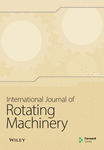Effects of Compressibility on the Performance of a Wave-Energy Conversion Device with an Impulse Turbine Using a Numerical Simulation Technique
Abstract
This article presents work carried out to predict the behavior of a 0.6 m impulse turbine with fixed guide vanes as compared with that of a 0.6 hub-to-tip ratio turbine under real sea conditions. In order to predict the true performance of the actual oscillating water column (OWC), the numerical technique was fine-tuned by incorporating the compressibility effect. Water surface elevation versus time history was used as the input data for this purpose. The effect of compressibility inside the air chamber and the turbine′s performance under unsteady and irregular flow conditions were analyzed numerically. Considering the quasi-steady assumptions, the unidirectional steady-flow experimental data was used to simulate the turbines characteristics under irregular unsteady flow conditions. The results showed that the performance of this type of turbine is quite stable and that the efficiency of the air chamber and the mean conversion efficiency are reduced by around 8% and 5%, respectively, as a result of the compressibility inside the air chamber. The mean efficiencies of the OWC device and the impulse turbine were predicted for 1 month, based on the Irish wave climate, and it was found that the total time period of wave data used is one of the important factors in the simulation technique.




